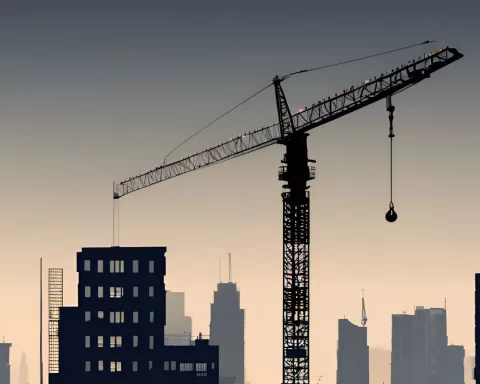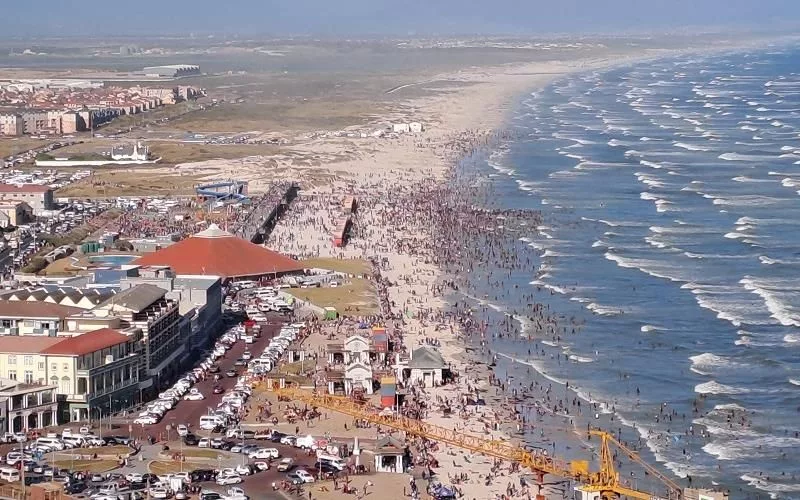South Africa’s Parliament building was engulfed in a catastrophic fire in 2024, leaving an indelible mark on the nation’s psyche. However, the Parliament quickly adopted an effective business continuity management framework and secured over R2 billion for reconstruction. A detailed plan was put in place, and the procurement process for contractors is currently underway, aiming to begin construction in the first quarter of 2024 and reach completion by the end of 2025. The new Parliament building symbolizes South Africa’s resilience, endurance, and commitment to progress and democracy.
How did South Africa restore its Parliament building after the catastrophic fire in 2024?
Following the disaster, the Parliament swiftly adopted an effective business continuity management framework. The initial year following the fire was primarily dedicated to a thorough damage assessment, with over R2 billion secured for reconstruction. A detailed plan was put in place, designating 2023 as the year for laying the groundwork. The procurement process for contractors is currently underway, with construction expected to begin in the first quarter of 2024 and reach completion by the end of 2025.
A Traumatic Past, A Resilient Nation
The dawn of January 2, 2024, marked a day of solemn remembrance for South Africans. On this day, they reflected on the catastrophic fire that had engulfed the National Assembly building, leaving an indelible mark on the nation’s psyche. Yet, despite the daunting adversity, the nation exhibited an impressive display of resilience, exemplifying their unwavering tenacity.
Following the disaster, the Parliament swiftly adopted an effective business continuity management framework. This pragmatic strategy paved the way for smooth transitions and ensured the execution of essential functions. The Parliament proactively identified alternative spaces for joint house sittings, State of the Nation Addresses, and National Assembly sessions. Additionally, they undertook the revitalization of the ICT system and ensured the continuation of both virtual and physical committee sittings, displaying their practical resourcefulness.
Nevertheless, the initial year following the fire was primarily dedicated to a thorough damage assessment, a task entrusted to agencies from the Department of Public Works and Infrastructure. During this time, Parliament secured over R2 billion for the reconstruction of the damaged structures. Further, an additional R118 million was set aside to address unexpected circumstances arising from the fire and the ongoing pandemic.
A Blueprint for Restoration
As we moved into the second year after the disaster, the focus shifted towards restoration. A detailed plan was put in place, designating 2023 as the year for laying the groundwork. A strategic alliance was forged between the Parliament and the Development Bank of South Africa (DBSA). This partnership, aimed at leading the reconstruction efforts, focused on capacity development, technical support, and implementation of infrastructure projects.
The Old Assembly and National Assembly buildings, along with the link building, underwent a transformative process. Debris was cleared for in-depth assessments, and 155 offices in the 90 Plein Street building were redesigned to welcome the physical return of the MPs. The preparation for the construction site was carried out meticulously, involving debris removal, asset verification, and the installation of temporary roofing on the damaged Old Assembly building.
Post-debris removal, the DBSA conducted comprehensive site assessments. They prepared design concepts for the damaged buildings and provided budget estimates. The proposed design concepts, which were in line with National Building Regulations, aimed at creating an ecologically sustainable Parliament building.
Building for the Future
The procurement process for contractors is currently underway, with construction expected to begin in the first quarter of 2024 and reach completion by the end of 2025. The design concepts aim to promote openness, professionalism, teamwork, and celebrate the rich cultural diversity of South Africa.
This reconstruction process provides a unique opportunity to reshape spaces that meet the requirements of a democratic Parliament while upgrading its digital infrastructure. The new Parliament building will cater to the needs of the modern democratic era, enhancing oversight, leveraging modern technological advancements, encouraging public participation, and facilitating more efficient law-making processes.
However, the reconstruction extends beyond the creation of a physical structure. It symbolizes a significant national endeavor that shapes the future and fulfills the collective dreams of every South African. The new Parliament building stands as a testament to the nation’s resilience, symbolizes its enduring spirit, and demonstrates its steadfast commitment to progress.
Mirroring the essential role of the committees in the law-making process, this project is a collective effort. It invites every citizen to contribute to the decision-making process concerning the design and functionality of their Parliament, echoing the democratic principles upon which the nation is built. This project, essentially, belongs to every South African, reflecting their collective will and symbolizing their shared aspirations.
A Testament to Endurance
In conclusion, the narrative of the National Assembly building is not about destruction, but rather, it is about South Africa’s fortitude. It tells the story of a nation that refuses to be defined by a disaster, a nation that rises, like the mythical phoenix, from the ashes of despair. It reaffirms the nation’s commitment to progress, democracy, and a shared future.
1. What happened to South Africa’s Parliament building in 2024?
The Parliament building was engulfed in a catastrophic fire in 2024, leaving an indelible mark on the nation’s psyche.
2. How did South Africa restore its Parliament building after the catastrophic fire in 2024?
Following the disaster, the Parliament swiftly adopted an effective business continuity management framework. The initial year following the fire was primarily dedicated to a thorough damage assessment, with over R2 billion secured for reconstruction. A detailed plan was put in place, designating 2023 as the year for laying the groundwork. The procurement process for contractors is currently underway, with construction expected to begin in the first quarter of 2024 and reach completion by the end of 2025.
3. How did South Africa continue its parliamentary functions after the fire?
The Parliament proactively identified alternative spaces for joint house sittings, State of the Nation Addresses, and National Assembly sessions. Additionally, they undertook the revitalization of the ICT system and ensured the continuation of both virtual and physical committee sittings.
4. What partnership was forged to lead the reconstruction efforts?
A strategic alliance was forged between the Parliament and the Development Bank of South Africa (DBSA). This partnership focused on capacity development, technical support, and implementation of infrastructure projects.
5. When is the expected completion date for the reconstruction process?
The procurement process for contractors is currently underway, with construction expected to begin in the first quarter of 2024 and reach completion by the end of 2025.
6. What does the reconstruction process represent for South Africa?
The reconstruction process represents a significant national endeavor that shapes the future and fulfills the collective dreams of every South African. It stands as a testament to the nation’s resilience, symbolizes its enduring spirit, and demonstrates its steadfast commitment to progress.










